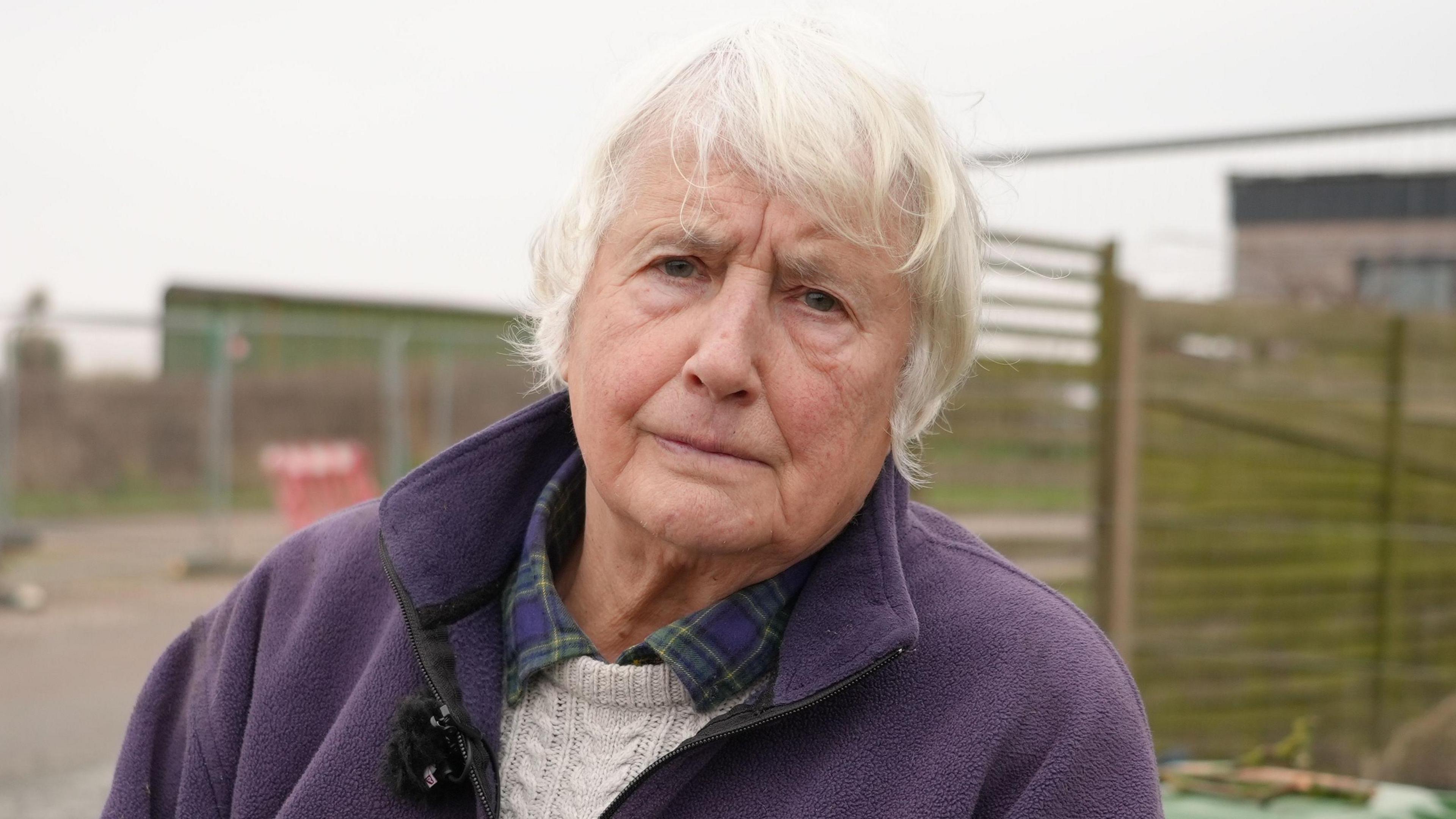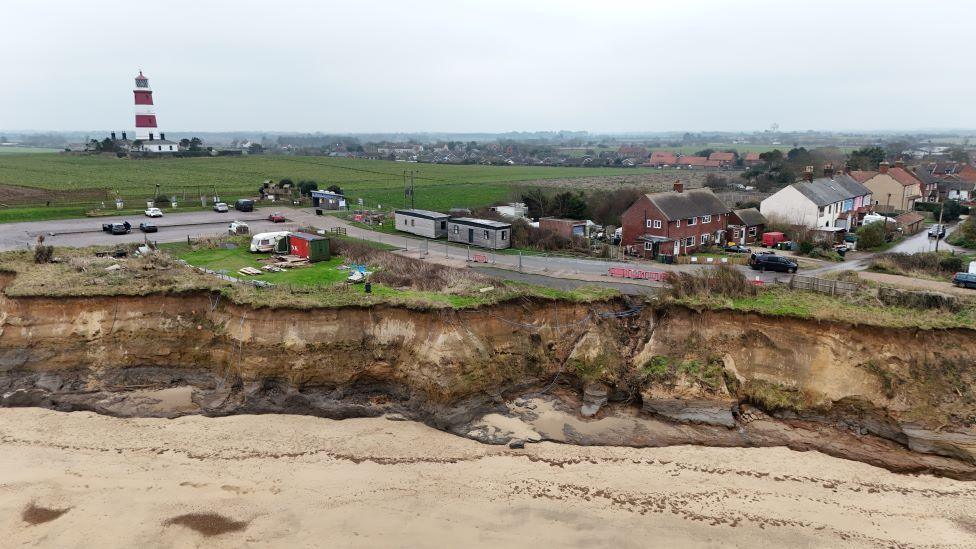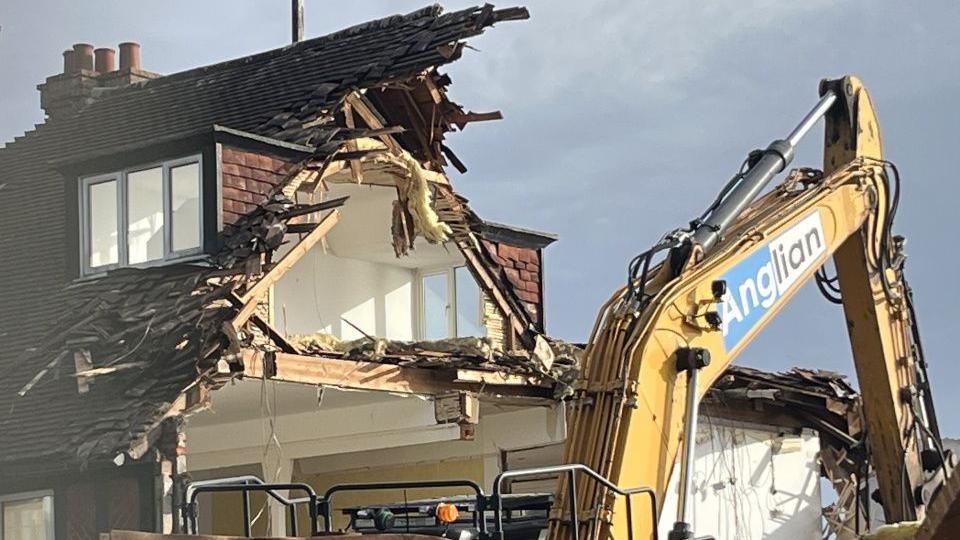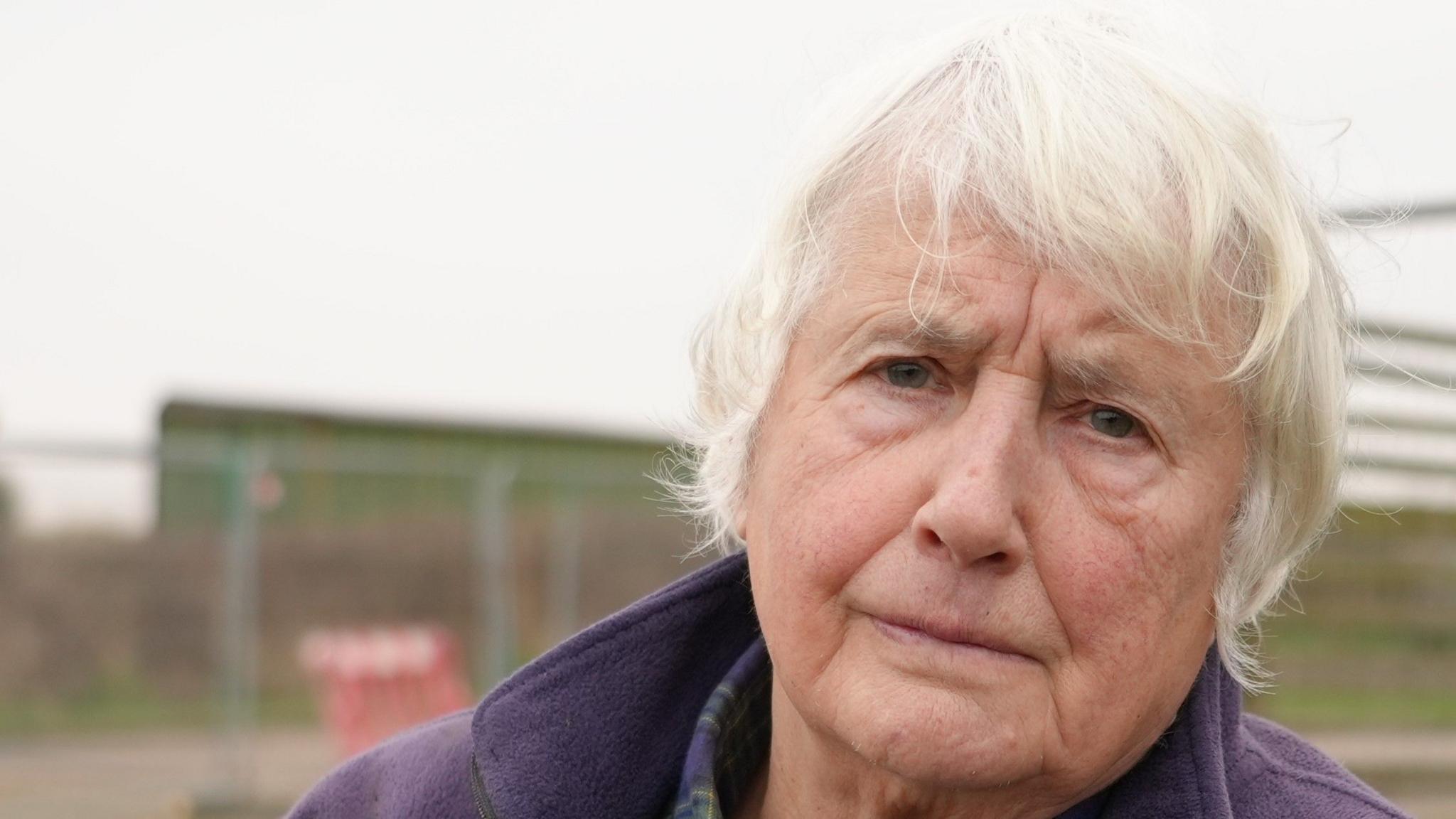Film highlights villagers' life on crumbling cliff

Joseph Harrington says seeing homes at risk to coastal erosion was "incredibly stark"
- Published
A new film is bringing the difficult conditions facing people living near crumbling clifftops to an international audience.
The documentary, After the Tide, follows three main characters who have either lost, or are at risk of losing, their homes at Happisburgh on the north Norfolk coast.
Filmmaker Joseph Harrington, 29, began filming in December 2021 after he worked with someone who revealed their family home was due for demolition.
Harrington, of Norwich, grew up visiting Norfolk's beaches but said seeing the erosion affecting Happisburgh and nearby Hemsby for himself had been "incredibly stark".
The film will be available to stream on Disney+ from next year.
"I was so shocked and horrified by the issue that faces Norfolk and how many homes we lose every year, and every couple of years, and how little I knew about it when I was only around the corner," he said.
He said no-one should be in a position of not knowing the risks of erosion when buying a seaside property.
Speaking to Edd Smith on BBC Radio Norfolk, he said: "It might not even cross your mind that erosion is an issue... we have areas of the country where there's lots of mines, so your home might be subject to underpinning one day, or you might live in a high flood-risk zone."
"You would never say to these people, 'You never should have bought that.'"
Also featured in the film is Dr Sophie Day, of the University of East Anglia, who works for Coastwise, a project helping to prepare communities for coastal change.

Bryony Nierop-Reading is one of the three villagers who feature in the documentary
He said the film explored climate change and arguments for and against sea defences at Happisburgh.
"I try to highlight to people it's [coastal erosion] always been happening and always will happen," he said.
"Climate change might accentuate it, but we've been dealing with lost villages for thousands of years on this coastline."

Harrington said he hoped to make a 15-minute film but ended up with a one-hour documentary
After finding out how much it would cost to license the film, he set about fundraising through screenings, including his first, attended by 150 people attended at Norwich Arts Centre.
He said this, along with funding from distributor Screenbound, was a "massive stepping stone".
"We never ever thought it would get this far from when we first started," he sauid.
"We wanted to make a 15-minute film about Happisburgh; we ended up with a one- hour documentary, and... it feels amazing to tell the people in the film that put their time and put their trust in me that it went somewhere and we did something."
Get in touch
Do you have a story suggestion for Norfolk?
Follow Norfolk news on BBC Sounds, Facebook, external, Instagram, external and X, external.
Related topics
More related stories
- Published28 October

- Published17 January

- Published9 July 2023
